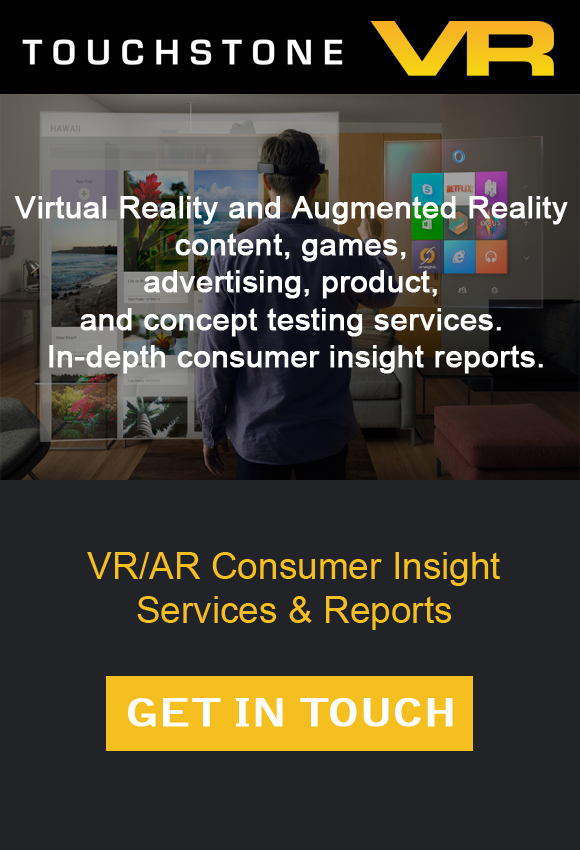Every day there are more and more articles on virtual reality; what apps are coming out, which new companies have formed, or what the latest breakthrough is; but an issue that’s receiving less of a spotlight than it should, is advertising. Advertisers are eager to try to enter the world of virtual reality, and for a good reason; as technology changes advertisers must adapt and evolve in order to stay relevant; and virtual reality technology may help advertisers become more relevant than they have in decades.
Advertisers try really hard to create experiences that will engage audiences with their message. This is challenging because an ad is typically shown before, or in the middle of, a video. Often, the ad breaks the immersion and is unrelated to the video consumers were watching, and these are the better ads. The worse advertisements are pop ups, banners on websites, or Facebook recommending something that they should have no business knowing you like. Many people find themselves using ad blocking software just to try and combat some of these ads, which is why virtual reality is going to be the next big thing in advertising; but only if it’s done right.
The hallmark of virtual reality is putting on a headset, entering an immersive experience, and not taking the headset off until that experience is finished. This type of media viewing presents a unique opportunity for advertisers; however its one where they have to tread lightly. When an individual uses a virtual reality headset, they aren’t going to take it off and end whatever they’re doing in virtual reality; they’re a captive audience so to speak. During these sessions, which could include watching a video or playing a game, advertisers can create brief ads which the user will almost have to watch; either that or end their VR session all together. The unique opportunity here is to create ads which people don’t mind watching, and some companies are already working on this.
Facebook and YouTube are two big names right now which support 360 degree video; and more importantly are experimenting with 360 degree ads. These videos are being utilized both on the desktop versions of the respective sites, as well as in the apps. The cool thing about these videos is they engage the user. Imagine an ad for Audi where the car was driving and at critical points you got to turn it by moving your field of vision, or you could look out the window and see where you’re going; you might not mind watching that ad so much.
Another big name in the small world of virtual reality advertising is Virtual Sky. Virtual Sky is a company dedicated to producing advertisements in virtual reality. They offer 5-10 second ads called ‘sponsor ads’ which play when a consumer launches VR apps or content. They also offer a 10-30 second ads called ‘experience ads’ which launch at natural breaks in VR content, like in between game levels. Virtual Sky also has a demo app which showcases some of these ads, and they are everything that a VR advertisement should be. They load instantly, aren’t too long, are beautiful looking, and most importantly they succeed at getting their message across.
Another route that advertisers are considering is a more subtle approach that is similar to the type of advertisements shown during movies. Picture this; you’re in a virtual kitchen trying to cook. You are fiddling with the ingredients and using a recipe. You finally have it all prepped and ready for the oven. You go to put it in the oven and a GE logo on the appliance catches your eye; a subtle product placement which is noticed but does not take away from immersion at all. This type of virtual reality advertising is less problematic for the consumer than video ads because it is subtle and doesn’t interrupt the immersive experience.
Virtual reality technology has the potential to be a blessing for advertisers; however it also has potential to problematic if advertisers do not do it properly. Consumers will be much less forgiving of a bad VR ad that they’re forced to sit through then they would be of a poorly made mobile ad they could just click out of. Equally important to the content quality is the production value. A poorly made VR ad can have a negative impact on an individual’s perception of that brand, and it could also ruin an individual’s VR experience. A lot of time and effort goes into making virtually reality content an enjoyable experience for the user. A sloppy ad could easily turn consumers off to a product, or even to virtual reality all together. This is why advertisers have to tread lightly because virtual reality can either be a great medium for them; or it can be something they ruin to the point of making people not want to use VR devices simply to avoid the annoying ads.
There is also great potential for advertisers to conduct research in virtual reality settings. Products could be virtually demonstrated for consumers who could then give feedback. This type of research would be much more immersive than current approaches and yield data that is far more interesting and actionable than traditional methods. The greater potential for this research revolves around how much more immersive and interactive it is for the users; if they can go to a virtual store and pick up and rotate objects they are going to be able to provide higher quality feedback when compared to them being shown a static image; and more importantly people in general would probably more interested in, and more willing to participate in, this type of research.
Ultimately advertising in virtual reality is currently being met with the same level of skepticism as the rest of the VR world; and for a good reason. Developers are skeptical to implement it into their hard worked, and often proprietary, technology for fear of ruining immersion. Publishers are also hesitant for the same reason; but most importantly the early adopters are concerned that VR advertising is something that, if not done properly, has the potential to be problematic for virtual reality. Marketers and Advertisers are optimistic about the possibility of entering a new medium, they just have to be sure to do their due diligence in order to make VR advertising the positive experience that it has the potential to be.
Below are some examples of early adopter brands using 360 videos in advertising:




